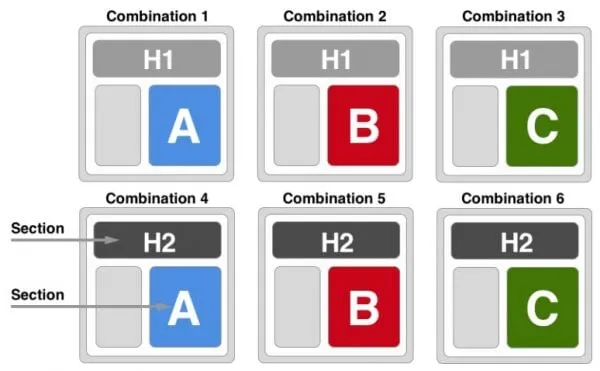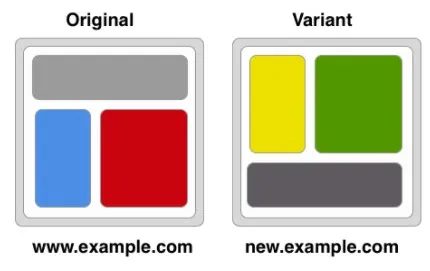The Tactical Approach to Conversion Rate Optimization

Conversion Rate Optimization, also known as CRO, is a key practice when looking to increase conversions on your website or app. CRO allows you to investigate elements on your website or app to improve and test how changes to certain components, such as form and cta buttons, can increase conversions. Although CRO is an incredibly valuable process, the concept of changing elements on one’s website can seem daunting. Luckily, many products that can simplify this process for you, such as Google’s CRO product, Google Optimize. In this blog, we will explain when and why you should be using CRO as well as when to use different tests in Google Optimize.
When Should You Use Conversion Rate Optimization?
The general rule with CRO is to test small, test often and keep testing. CRO is a tool to investigate and prove your assumptions and hypotheses about your site right or wrong. It is best to try out an idea as a test to measure the impact on a subset of users instead of making a change and discovering it was detrimental to performance after the fact. CRO allows you to ask questions of your users’ behaviour and tweak your site incrementally instead of tying you to a potentially costly development lifecycle.
CRO testing is part art and part science. Testing ideas should be informed based on data from third-party tools such as Hotjar, Crazy Egg and Contentsquare. These can be particularly helpful for understanding user behaviour on your site.
Not only should you use CRO testing to improve the experience on your site/app but you can also use it to inform how certain messaging, landing pages, images and calls to actions resonate with your audiences.
The targeting capabilities with CRO testing tools such as Google Optimize are quite expansive and flexible. Targeting options range from the ability to target different traffic sources and geographical areas to more custom uses such as data layer variables and first-party cookies. The direct integration of Google Optimize with Google Analytics and the ability to share audiences between the platforms adds value to the analytics practice. These integrations not only allow you to keep a record of results and insights learned from previous tests but also offer deeper insights into the user journey to conversion.
Types of Tests & When to Use Them
A/B Tests
A/B testing involves changing one element on a webpage to create a variant. The performance of the original and the modified page are then observed and measured and a leader is identified based on the conversion rate of selected goals and the statistical significance of the results.
A/B testing is a great way to evaluate one specific change and keep everything else constant. It allows you to deep dive into the impacts of a specific modification to make sure that the changes are for the better. This is the most common and simplest type of CRO. It is usually used to optimize an existing page.

Multivariate Tests
Multivariate tests are like A/B tests except that many different combinations of elements can be changed. Instead of showing which variant is most effective like in A/B tests, multivariate tests identify the most effective combination of variants. These tests also analyze the interactions between the various elements.
This test type is ideal for determining what combination of variants are the most effective. However, with many variant combinations running at the same time, it may take longer to achieve the necessary traffic to each test and to have a statistically significant result. In addition, multivariate tests make it difficult to tell whether certain changes are actually effective. By testing a combination of changes, it may be challenging to tell whether there is an increase in conversions due to the combination of changes or only one of them. It is also more difficult to set up in general as this test type is more complex.

Redirect Tests
Redirect tests, also known as split URL tests, allow you to compare and test separate web pages to each other. In these tests, the variants are identified by a URL or page path.
This test type is useful for comparing the effectiveness of two landing pages and test redesigns before fully launching them. Redirect tests are commonly used for situations such as testing landing pages for media, social and email campaigns. Redirect tests should be used for big changes on a page.

Personalization
Personalization is the concept of tailoring experiences to specific users. Although personalizations are not tests, they may be used to implement insights that were identified through the experiment types above. Personalization may come about once the leader in an experiment has been identified. You may wish to deploy this winning variant to all your visitors or a specific group of users. These personalizations do not have an end date and do not have any variants as they are a combination of changes users see if they meet specific targeting conditions.
Although Conversion Rate Optimization may seem daunting, it is a valuable practice. We hope that this blog will help you navigate the world of optimization and testing with more ease.
Let us know if you have any questions here!
